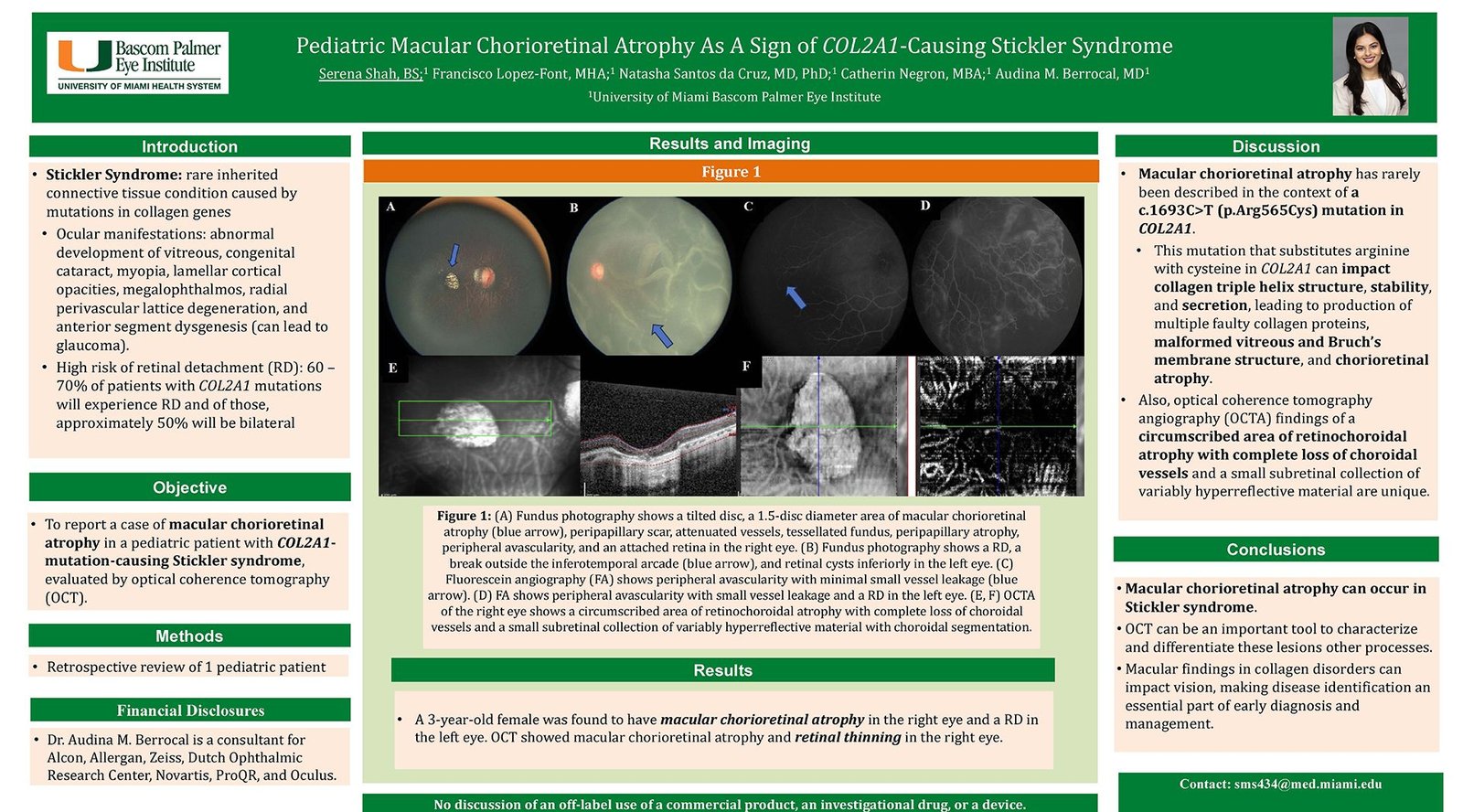CASE REPORT

Pediatric Macular Chorioretinal Atrophy As A Sign of COL2A1-Causing Stickler Syndrome
PRESENTING AUTHOR
Serena Shah
-
Natasha Ferreira Santos da Cruz,Bascom Palmer Eye Institute
-
Francisco Lopez-Font,Bascom Palmer Eye Institute
-
Catherin Negron,Bascom Palmer Eye Institute
-
Audina M. Berrocal,Bascom Palmer Eye Institute
-
Purpose:
Our study reports a case of macular chorioretinal atrophy in a pediatric patient with COL2A1-mutation-causing Stickler syndrome, evaluated by optical coherence tomography (OCT).
-
Case Report:
A 3-year-old female was found to have macular chorioretinal atrophy in the right eye and a retinal detachment (RD) in the left eye. OCT showed macular chorioretinal atrophy and retinal thinning in the right eye.
-
Discussion:
Ocular findings, such as type 1 congenital membranous vitreous anomaly, afibrillar vitreous gel without normal lamella structure, stable high myopia, and bilateral RD, have been previously described in patients with the c.1693C>T (p.Arg565Cys) mutation in COL2A1 seen in our patient. Macular chorioretinal atrophy has rarely been described in the context of a c.1693C>T (p.Arg565Cys) mutation in COL2A1. Less common mutations that substitute arginine with cysteine in COL2A1, such as in the case of our patient’s mutation, can impact collagen triple helix structure, stability, and secretion, leading to production of multiple faulty collagen proteins, malformed vitreous and Bruch’s membrane structure, and possible chorioretinal atrophy. Also, our optical coherence tomography angiography (OCTA) findings of a circumscribed area of retinochoroidal atrophy with complete loss of choroidal vessels and a small subretinal collection of variably hyperreflective material is unique compared to previously documented literature.
-
Conclusions:
Macular chorioretinal atrophy can occur in Stickler syndrome. OCT imaging can be an important tool to characterize and differentiate these lesions from infectious or degenerative processes. These macular findings in collagen disorders can impact vision, making disease identification an essential part of early diagnosis and management.
The authors have no financial interests in any material discussed in this article. There are no conflicts of interest to disclose.












